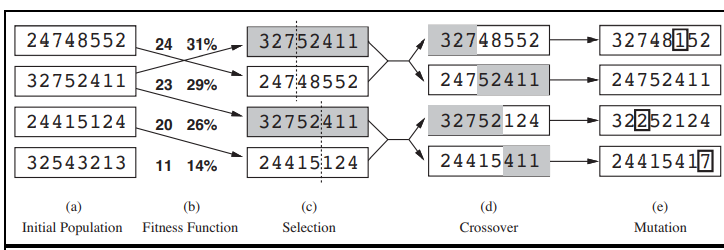A genetic algorithm (or GA) is a variant of stochastic beam search in which successor states are generated by combining two parent states rather than by modifying a single state.
GAs begin with a set of k randomly generated states, called the population. Each state, or individual, is represented as a string over a finite alphabet—most commonly, a string of 0s and 1s. For example, an 8-queens state must specify the positions of 8 queens, each in a column of 8 squares, and so requires 8 × log2 8 = 24 bits. Alternatively, the state could be represented as 8 digits, each in the range from 1 to 8
Fitness function
A fitness function should return higher values for better states, so, for the 8-queens problem we use the number of nonattacking pairs of queens, which has a value of 28 for a solution. The values of the four states are 24, 23, 20, and 11. In this particular variant of the genetic algorithm, the probability of being chosen for reproducing is directly proportional to the fitness score, and the percentages are shown next to the raw scores

